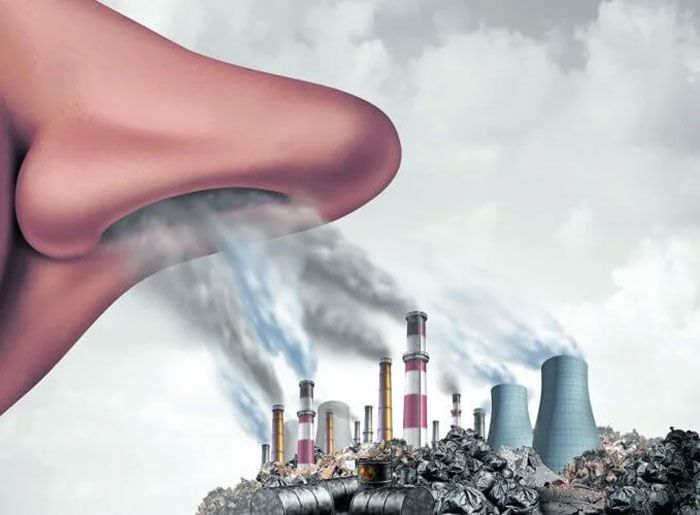Is using a toxic gas meter safe for workers, is it really necessary?
In specific working environments such as industry, construction, oil and gas or chemical processing, the presence of toxic gases is obvious and cannot be ignored. Gases such as carbon monoxide (CO), hydrogen sulfide (H2S) or ammonia (NH3) can directly affect health and cause danger if not detected promptly. Some serious cases can lead to loss of consciousness or even death in a short time.
Contents
Therefore, the use of toxic gas meters plays an important role in protecting the safety of workers. However, the question is under what conditions and what jobs do we need this device?

Working in a confined space
Areas such as tanks, sewers or water tanks often have poor ventilation systems, creating conditions for toxic or flammable gases to accumulate without obvious signs. In this environment, just a few minutes of exposure to gases such as CO, H2S or a lack of oxygen can cause workers to suffocate or lose consciousness, causing serious danger.
Before starting work, it is necessary to use a toxic gas meter to check the gas level in that space, ensuring that the concentration of oxygen, toxic gas and flammable gas is at a safe level. At the same time, during the working process, carrying a personal gas meter helps to continuously monitor and detect any changes in gas concentration early so that timely treatment measures can be taken..
Working in Oil, Gas and Mining
In the oil and gas exploitation and mining environment, the presence of gases such as methane (CH4) and hydrogen sulfide (H2S) is inevitable. These gases can leak from underground or arise during drilling and mining.
Note:
When working on a drilling rig or in a mine, it is necessary to equip a multi-function toxic gas meter to monitor many types of dangerous gases at the same time. This helps to quickly detect unusual changes and issue warnings as soon as the gas level exceeds the safety limit.
Chemical Production and Waste Treatment
In chemical manufacturing or industrial waste treatment plants, many types of toxic gases can be generated during the preparation, production or processing of chemical compounds. Gases such as chlorine (Cl2), ammonia (NH3) or VOC (volatile organic compounds) can cause irritation, serious health effects, and even be life-threatening when exposed at high concentrations.
In areas at risk of toxic gas generation, installing a fixed gas detector helps to continuously monitor and promptly detect any leaks. At the same time, workers need to be equipped with a portable gas detector to check on-site before working.
Sewer and Septic Tank Treatment
Working in sewers, septic tanks or waste treatment areas is potentially risky due to the accumulation of gases such as methane (CH4) and hydrogen sulfide (H2S). These gases can cause suffocation or even loss of consciousness after just a few minutes of exposure. In addition, some gases are flammable, increasing the risk of fire and explosion if not controlled promptly.
Before going down the sewer or tank, it is necessary to use a gas meter to check the concentration of toxic gases, ensuring a safe working environment. At the same time, during the working process, it is necessary to equip a multi-function gas meter to continuously monitor, promptly detect unusual changes and take appropriate protective measures.
Working in Food Manufacturing
Not many people think about the risk of toxic gases in the food production and preservation industry, but in fact, monitoring gases in this environment is very important. For example, in cold storage or food processing plants, ammonia (NH3) is often used as a refrigerant. If a leak occurs, NH3 can cause skin irritation, chemical burns or respiratory effects when exposed at high concentrations.
In areas where ammonia is used, fixed gas detectors should be installed to detect leaks as soon as there are signs of abnormalities. In addition, employees working directly with the refrigeration system should be equipped with portable gas detectors for on-site inspection.
Working in the Energy and Power Industry
In thermal power plants, nuclear power plants or radioactive waste treatment facilities, fuel combustion and chemical processing can produce toxic or flammable gases such as carbon monoxide (CO) and hydrogen sulfide (H2S). If not detected early, these gases can affect the health of workers and pose a potential risk of fire or explosion.
To ensure safety, fixed gas monitors should be installed in areas such as boilers, thermal control rooms or chemical warehouses to continuously monitor toxic gas concentrations. At the same time, employees working in these environments should be equipped with personal gas monitors to check for gas on-site when moving between high-risk areas.
See related articles: Why should you use a toxic gas extractor?